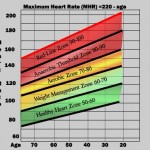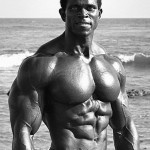At any given moment your body is always burning some fat and some glycogen. The intensity of your state is what determines where this ratio is.
Sleeping is on the low end of the intensity scale and this is when you are burning a very high percentage of fat.
On the other end is an all out max sprint where you are burning stored ATP.
Every other state of intensity is somewhere between these two extremes the ratio of fat vs glycogen/glucose that you are burning changes depending on the state you are in.
This doesn’t mean that sleeping is necessarily the best way to burn fat. What it does mean is that it doesn’t really matter what type of exercise you do or what intensity it is…all of it will still cause you to burn more calories, and that is what matters for fat loss.
Even if you are doing high intensity exercise that burns mostly glycogen, your body will use your bodyfat stores to make up this deficit.
In todays podcast we’ll discuss the difference between burning body fat and glycogen and why this really doesn’t matter if your goal is fat loss.
At the end of the day a caloric deficit is the only goal for fat loss no matter how you arrive at it.
John
Podcast: Play in new window | Download

